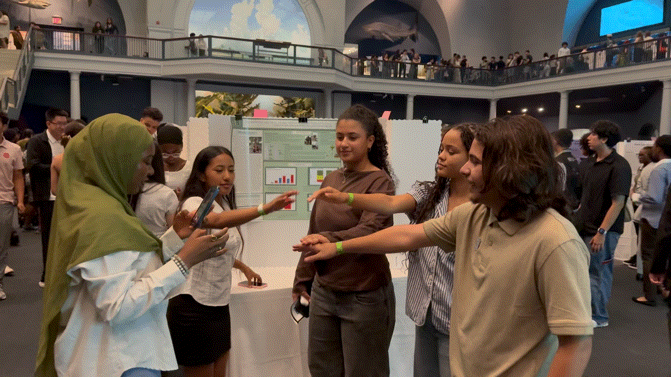Disparities In Tree Health And Tree Soil In East Harlem Versus The Upper East Side
How healthy are street trees in Harlem versus neighbor trees on the Upper East Side?
Intern(s):
Sarah Ibrahim, Fabiola Javier Valdovino, Yadiel Lopez
Mentor(s):
Fatoumata Doll and Bailey Emhoff
Project Period:
2025 Summer
Team:
Harlem

Urban trees are critical to improving air quality, reducing urban heat, and supporting community health (Leland, 2021). Proximity to trees is positively associated with self-reported health among New Yorkers (Reid et al., 2017). Yet, tree growth and health are not equitably distributed across New York City. In affluent neighborhoods such as the Upper East Side (median household income $165,280), trees are generally taller, older, and better maintained. In contrast, East Harlem (median household income $46,950) has fewer, smaller, and more stressed trees (Leland, 2021; NYU Furman Center, 2023). This disparity may exacerbate environmental and health inequities, as East Harlem also experiences higher street-level temperatures and reduced access to green space.
This project investigates whether soil quality contributes to differences in tree health between East Harlem and the Upper East Side. Building on data from the 2015 New York City tree census (NYC Parks, 2015), we measured tree circumference, visible health, and presence of tree guards. Soil samples were collected six inches deep near tree roots and analyzed for moisture, pH, and nutrient levels. Soil moisture was used as an indicator of water availability for photosynthesis, respiration, and transpiration (Purcell, 2021). pH was measured, as values near 7.0 generally promote tree health (Queensland Government, 2025). Nitrogen, phosphorus, and potassium concentrations were also tested, given their essential roles in growth and resilience (Liu et al., 2021).
By examining ecological and infrastructural conditions across these contrasting neighborhoods, this study highlights how environmental justice intersects with urban ecology and offers insights for more equitable urban planning and tree maintenance.
This page was originally developed by BioBus Summer 2021 Jr. Scientist William Rhee.
